In this article, we will dive into this extraordinary creature’s history, facts, size, habitat, and classification. So, let’s get started and explore the intriguing world of lobsters.
Lobsters are crustaceans, which means they have an exoskeleton and jointed legs. They belong to the same family as crabs and shrimps and are found in oceans worldwide. These animals have a long history and can be traced back millions of years. Fossil records show that lobsters have remained relatively similar in appearance over time.
Lobsters come in various sizes, with some species reaching an impressive length of up to three feet! These creatures have a hard outer shell that provides them protection. They live in diverse habitats, such as rocky areas, coral reefs, and sandy bottoms of the ocean. Lobsters play a vital role in maintaining the balance of marine ecosystems.
History of Lobster’s
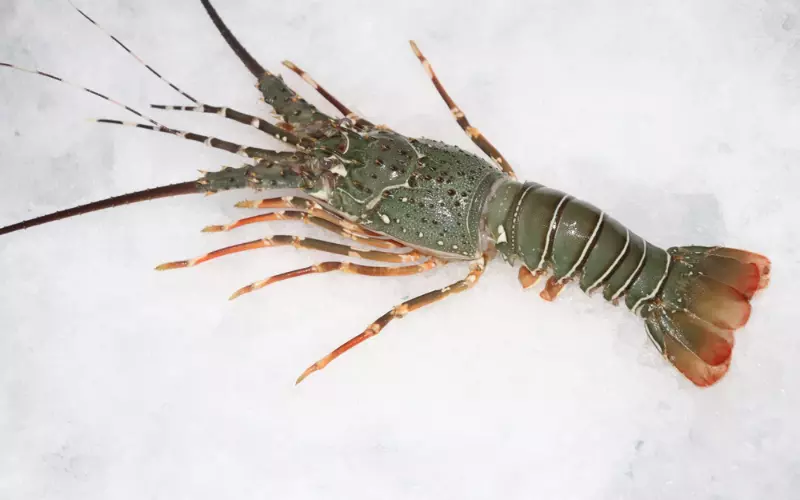
The lobster has a fascinating history that spans thousands of years. In ancient times, lobsters were plentiful and significantly more significant than the ones we see today. Native Americans were among the first to discover the delicious taste of lobsters and utilized them as a reliable food source. They would catch lobsters by hand and cook them over an open fire, enjoying their rich flavour and dense meat.
During the colonial period, lobsters were considered a poor person’s food. They were so abundant that they would often wash ashore in large quantities. Wealthy individuals would even sign contracts to ensure they would not be served lobster too frequently. However, as the popularity of lobsters grew, they became increasingly sought after as a delicacy. As railroad systems expanded in the 1800s, lobster could be shipped to inland cities, making it more accessible to people nationwide.
Over time, lobster became a symbol of luxury and wealth. In the early 20th century, it was a common sight in lavish banquets and restaurant menus. Today, lobster is highly valued and prized for its exquisite taste. It is enjoyed in various ways, including buttery lobster rolls, flavorful bisques, and succulent steamed or grilled lobster tails. Lobster fishing, particularly in North America, is tightly regulated to protect the population and promote sustainable practices.
The humble lobster has transformed from a lowly food source to a symbol of luxury. Its history reflects the changing tastes and culinary preferences throughout the centuries. Despite its fluctuating status, one thing remains constant: the irresistible allure of its delicious, delicate flavour. So next time you enjoy a succulent lobster dish, remember this remarkable animal’s long and fascinating journey.
Importance of Lobster
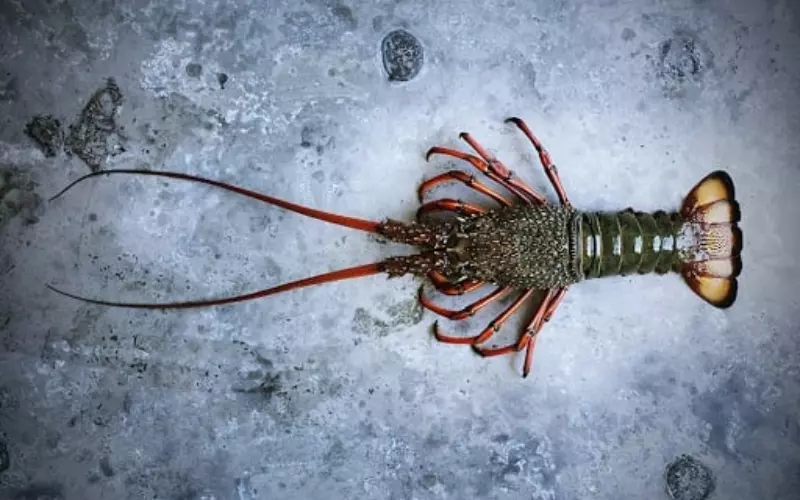
The lobster is a fascinating creature that plays a vital role in the ecosystem. First, lobsters help maintain a balanced ocean environment by being part of the food chain. They feed on other small marine animals, such as crabs and clams, helping to control their population. Without lobsters, these smaller creatures would multiply rapidly and disrupt the ecosystem’s delicate balance.
Secondly, lobsters are economically important. They are a highly valued seafood delicacy worldwide, and their fishing industry provides employment and income for many communities. Lobster fishing not only supports the livelihoods of fishermen but also creates jobs in processing, packaging, and distribution.
Lastly, lobsters are an indicator of a healthy and clean environment. They are sensitive to pollution and changes in water quality. If there are issues with the water, such as pollution or excess nutrients, lobsters will be affected, and their population will decline. Therefore, monitoring the health and numbers of lobsters can help us understand the state of our oceans and take necessary actions to protect them.
Lobsters are not only exciting creatures, but they also have an essential role in our ecosystem. They help maintain balance, provide economic benefits, and serve as indicators of environmental health. We must appreciate and protect these beautiful animals for our planet’s well-being.
Amazing Facts About Lobster’s
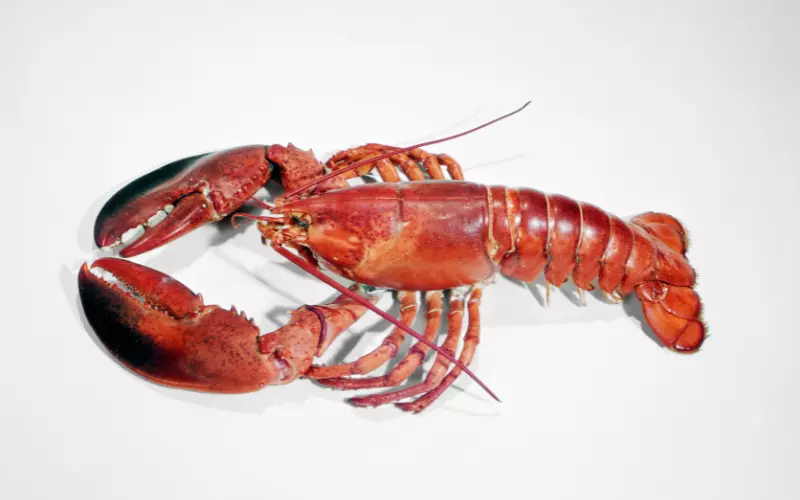
1. Lobsters are sea animals that live primarily in saltwater environments.
2. They have a hard exoskeleton of a tough outer shell that protects their bodies.
3. Lobsters can come in various colours, including blue, green, or brown shades.
4. They have two large claws, one more extensive and used for crushing prey while the other for cutting.
5. Lobsters have a sense of taste, touch, and smell but not a great sense of hearing or sight.
6. These creatures are nocturnal, meaning they are most active at night and rest during the day.
7. Lobsters are scavengers and will eat pretty much anything they can find, including dead animals and plants.
8. They can walk on the ocean floor using their eight legs and swim by beating their tails rapidly.
9. Lobsters are able to regenerate lost limbs, meaning if they lose a claw or leg, it can grow back over time.
10. They live in caves on the ocean floor, creating homes by digging tunnels in the sand or mud.
11. Lobsters are considered long-living animals, with some species living up to 70 years or even more.
12. Female lobsters are usually smaller than males, carrying their eggs under their abdomen until they hatch.
13. These animals have a unique way of protecting themselves by squirting a jet of water from their mouths when threatened.
14. Humans often catch and use lobsters as a food source, especially in seafood dishes and lobster rolls.
15. Some lobsters, like the American lobster, are commercially important and are harvested in sustainable and regulated fisheries.
Can we keep Lobster as our Pet?
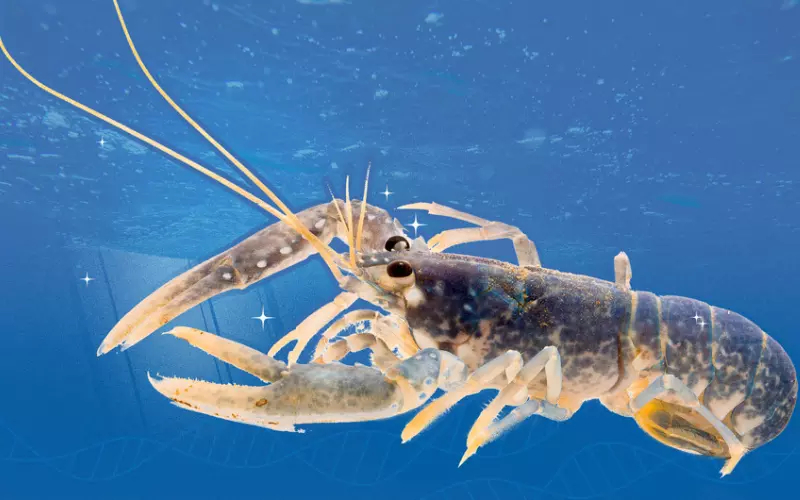
Many people wonder if lobsters can be kept as pets. While it may be tempting to have such a unique creature at home, it is not advisable to keep lobsters as pets. Lobsters are fascinating marine animals that prefer to live in natural habitats, like the ocean or saltwater aquariums.
Lobsters need specific conditions to survive and thrive. They require a large tank with cold, clean, and well-oxygenated water. The water should also have specific salinity levels to mimic their natural environment. Additionally, lobsters need hiding spaces, such as rocks or caves, to feel secure. Meeting all these requirements can be quite challenging and expensive for a pet owner.
Furthermore, lobsters require a specialized diet, mainly consisting of meat, fish, and shellfish. Feeding them a proper diet can be pretty expensive, and it may be difficult to find the right food for them. Also, lobsters are not known for their social or friendly nature. They are solitary animals that prefer to hide or wander alone rather than interact with humans or other pets.
While lobsters seem like exciting pets, they are unsuitable for most people. Their need for specific tank conditions, a specialized diet, and their solitary nature make them difficult to care for properly. It is best to admire these intriguing creatures in their natural habitats or aquariums designed for their specific needs.
Size of Lobster’s
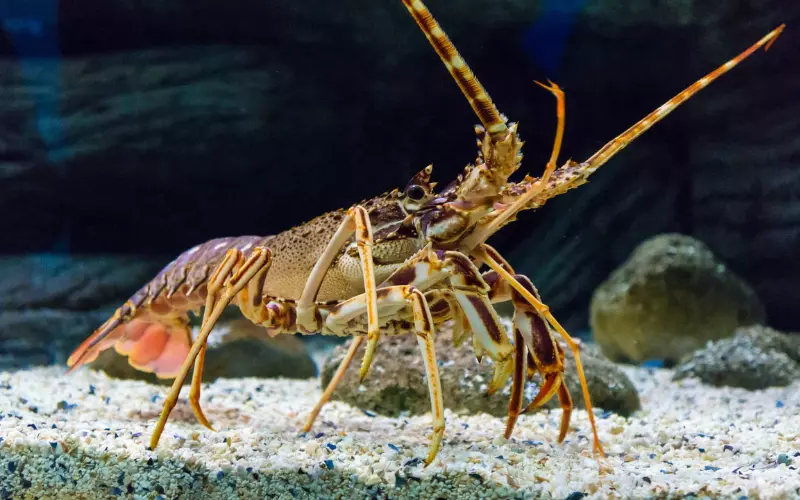
Lobsters are fascinating creatures that live in the ocean. They belong to a group of animals called crustaceans, which also include crabs and shrimp. Lobsters can grow quite large, averaging 12 to 20 inches long. However, some species of lobsters can reach an astonishing size of up to 3 feet long! Imagine that: a lobster as long as your dad’s arm!
The size of a lobster can vary depending on different factors, such as age and food availability. Generally, younger lobsters are smaller than the older ones. It takes several years for a lobster to reach its full size, and during this time, they moult or shed their hard outer shell. As they grow, they continue to moult until they reach adulthood. It’s like they’re changing their clothes to accommodate their growing bodies!
Lobsters have a unique body structure that allows them to hide and protect themselves. They have a tough exoskeleton, or outer shell, that provides solid armour. Underneath this hard shell, lobsters have a soft and flexible body. This is why they must periodically moult to grow and replace their old shell. So, next time you see a lobster on a dinner plate or in an aquarium, remember that these incredible creatures can grow enormous in the ocean!
Habitat of Lobster’s

The lobster, a fascinating sea creature, can be found in various habitats worldwide. These fantastic animals prefer to reside in cold, rocky environments, such as the Atlantic coast of North America, where they can seek shelter and protection. The underwater landscapes lobsters call home are filled with nooks and crannies created by rocky formations, providing the perfect hideouts for these crustaceans.
Lobsters dwell in crevices and caves on the ocean floor, seeking refuge from predators and harsh waves. They are well adapted to living in these challenging environments due to their strong exoskeleton, or outer shell, which shields them from potential harm. The rocky terrain also offers an abundant food supply for lobsters, as they scavenge for small fish, molluscs, and other marine organisms that reside amongst the rocky crevices.
While lobsters can be found in various habitats, they are particularly famous for their presence in underwater kelp forests. These towering seaweed plants provide an ideal setting for lobsters, as they offer shelter and a food source. Kelp forests are like bustling cities for marine life, with lobsters finding safety and nourishment among the dense tangle of seaweed.
Lobsters thrive in cold, rocky habitats, where they can utilize their strong exoskeletons to protect themselves against predators and harsh ocean conditions. They reside in underwater landscapes rich in rocky formations, crevices, and kelp forests. These habitats provide lobsters with the necessary shelter and ample food sources to survive and thrive in their marine environment.
Classification of Lobster’s
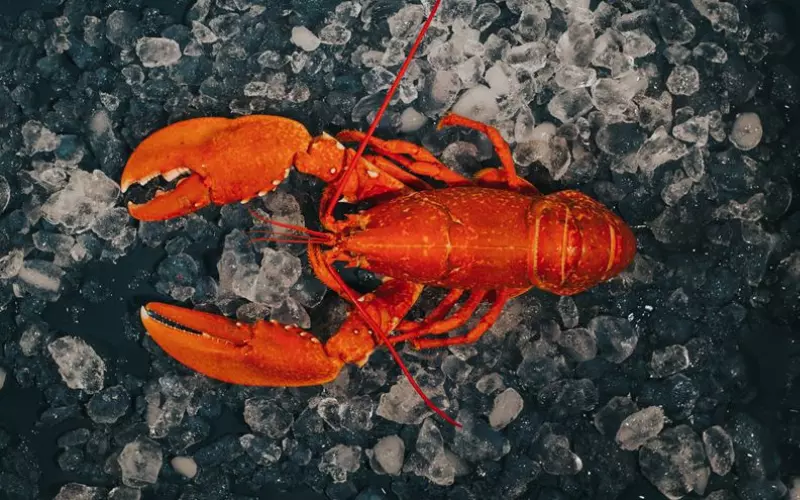
Lobsters are fascinating creatures that belong to the animal kingdom, specifically the phylum Arthropoda. In this diverse phylum, lobsters are classified in the class Malacostraca. These marine animals can be found in oceans and seas worldwide, from tropical to polar regions. Lobsters are further classified into the order Decapoda, which includes other crustaceans such as crabs and shrimp.
The classification of lobsters continues with the family Nephropidae. Within this family, there are two main genera: Homarus and Nephrops. The genus Homarus includes the two most well-known and commercially essential lobster species, the American lobster (Homarus americanus) and the European lobster (Homarus gammarus). The genus Nephrops includes species commonly known as Norway lobsters or langoustines.
At the species level, the American lobster is scientifically named Homarus americanus. These lobsters are found in the Atlantic Ocean off the coast of North America. They have a sturdy body with two large claws, which they use for defence and capturing prey. The European lobster, Homarus gammarus, can be found along the coast of Europe and Northern Africa. They are similar in appearance to the American lobster but have a slightly different colouration.
Lobsters are an arthropod belonging to the class Malacostraca and the order Decapoda. They are further classified into the family Nephropidae, which includes the genera Homarus and Nephrops. The two most common species of lobster are the American lobster (Homarus americanus) and the European lobster (Homarus gammarus). Understanding the classification of lobsters helps scientists and researchers study and conserve these unique and critical marine animals.
Different Types of Lobsters

1. American Lobster: The American lobster is among the most popular lobsters worldwide. It has a hard shell and is found in the Atlantic Ocean. They are known for their delicious meat and are often used in lobster rolls and bisque dishes.
2. Spiny Lobster: The spiny lobster, also known as the rock lobster, is found in warm waters. Unlike the American lobster, it has a spiny shell and lacks large front claws. Their sweet and tender meat makes them a favourite in many seafood cuisines.
3. European Lobster: The European lobster is commonly found in the northeastern Atlantic Ocean. It has a thick, hard shell and is highly sought after for its rich and flavorful meat. Due to its popularity, it is often considered a delicacy in many European countries.
4. Caribbean Spiny Lobster: This type of lobster can be found in the warm waters of the Caribbean Sea. It is similar to the spiny lobster and popular in tropical seafood dishes. The Caribbean lobster has a spiny shell, a long tail, and a sweet taste.
5. Slipper Lobster: Slipper lobsters can be found in various oceans worldwide, including the Indian and Pacific Oceans. They have a distinct appearance with a flat, elongated body and long antennae. Their meat is delicate and has a unique flavour that seafood enthusiasts love.
6. Red Lobster: Red lobsters are native to the Pacific Ocean, especially around the coasts of California and Baja California. They get their name from their vibrant red colour. The meat of the red lobster is tender and succulent, making it a popular choice in seafood restaurants.
7. Eastern Rock Lobster: The eastern rock lobster is found along the coasts of Australia and New Zealand. It has a firm texture and a mild, slightly sweet flavour. This type of lobster is highly valued in the culinary world and is known for its versatility in various dishes.
8. Slipper Spiny Lobster: Slipper spiny lobsters are native to the waters of the Indo-Pacific region. They have a unique appearance with a smooth, flat shell and long antennae. The meat is tender and flavorful, often used in Asia for dishes like stir-fries and lobster sashimi.
9. Persian Lobster: Persian lobsters are found in the Persian Gulf, making them a delicacy in Middle Eastern cuisines. They have a hard shell and a firm texture. The meat is highly prized for its sweet taste and is often grilled or served as a seafood platter.
10. Ornate Rock Lobster: The ornate rock lobster is native to the waters around Australia. It features a striking appearance with vibrant colours and ornate patterns on its shell. The meat is sweet and tender, making it a favourite ingredient in Australian seafood dishes and barbecues.
Geographical Presence of Lobster
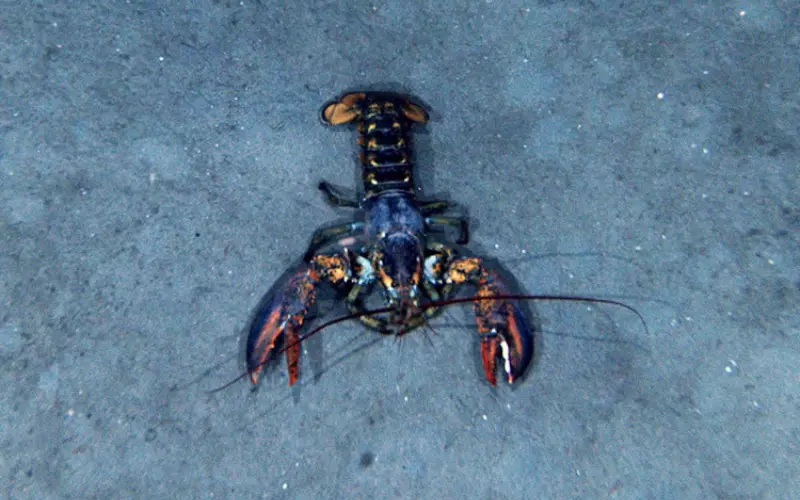
Lobsters are mainly found in the region of the Atlantic Ocean, specifically in colder waters like the North Atlantic Ocean and the Gulf of Maine. This includes areas around Canada, the United States, and parts of Europe. They prefer rocky or sandy habitats and are often caught by fishermen who set traps to catch them.
However, lobsters are not found in all parts of the world. They are not commonly found in warmer waters like the Pacific Ocean or the Indian Ocean. This is because lobsters require specific temperatures and habitat conditions to survive. So, if you’re in a place where the water is warm, you’re less likely to come across lobsters.
Additionally, lobsters are not found in freshwater bodies such as lakes or rivers. They are solely marine animals and cannot survive in freshwater environments. This is because lobsters have evolved to thrive in saltwater and have particular adaptations to help them survive in their preferred ocean habitats.
Lobsters can be found in the Atlantic Ocean, particularly in colder waters. They are not found in warmer waters like the Pacific Ocean or the Indian Ocean, and they do not inhabit freshwater bodies such as rivers or lakes. Lobsters are fascinating marine creatures that have specific habitat requirements for their survival.
Diet of Lobster’s

Lobsters are fascinating creatures that live in the ocean. They have a special diet which helps them survive and stay healthy. Their diet mainly consists of fish, crabs, clams, and even more undersized lobsters.
Firstly, lobsters are carnivorous, which means they eat meat. They have strong pincers to catch their prey. They use their sharp claws to crack open the hard shells of their food. Lobsters are opportunistic feeders and will eat almost anything they find, including dead animals or plants. They are considered scavengers, which means they eat leftover bits of food that sink to the ocean floor.
Secondly, lobsters have a great sense of smell. They have tiny hairs on their antennae that help them detect the scent of their prey. This helps them locate their food even when it’s hiding or camouflaged. Lobsters are also nocturnal, which means they are most active at night when they search for food.
Lastly, lobsters have a unique eating technique called moulting. As they grow, they outgrow their hard exoskeletons and shed them. After moulting, their new shell is soft and vulnerable. During this time, lobsters rely on their stored energy and do not eat until their new shells harden. It’s like taking a break from eating while they grow a new protective covering.
Lobsters have a varied diet of fish, crabs, clams, and other lobsters. They are carnivorous and will eat almost anything they find. They have a great sense of smell, which helps them locate their prey. Additionally, lobsters moult to grow, during which they refrain from eating until their new shell hardens.
Locomotion of Lobster’s
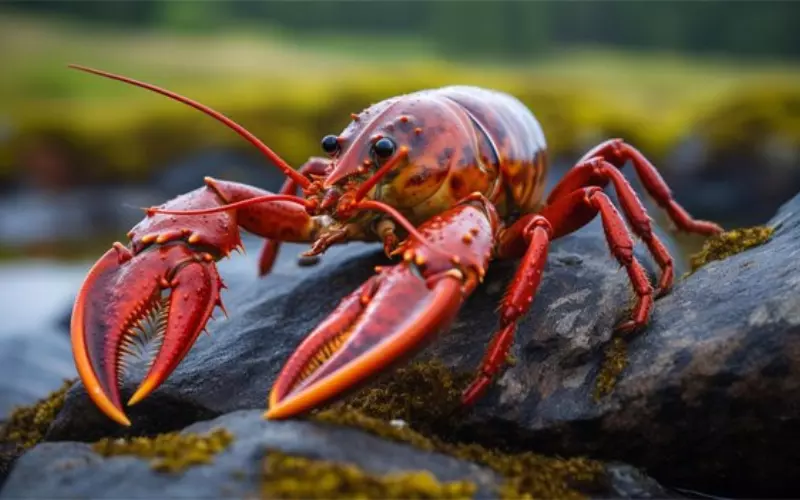
Lobsters, the incredible marine animals, move in a unique way called locomotion. They have a fascinating method of getting around that allows them to explore the ocean floor. When lobsters want to move forward, they use a pair of muscular legs called pereopods. They have eight of these legs positioned on the side of their body.
To begin moving, lobsters flex and extend their pereopods, propelling themselves forward in a walking-like motion. These legs are not only used for walking, but they also allow lobsters to swim backwards by rapidly flapping them. It’s pretty impressive to see these creatures shifting gracefully through the water using the same legs they use for walking on the ocean floor.
Lobsters have developed a remarkable way of locomotion using their eight pereopods. Lobsters can walk and even swim backwards by flexing and extending these muscular legs. Their method of getting around and exploring their underwater world is truly fascinating.
Social and Sexual Behaviour of Lobster’s
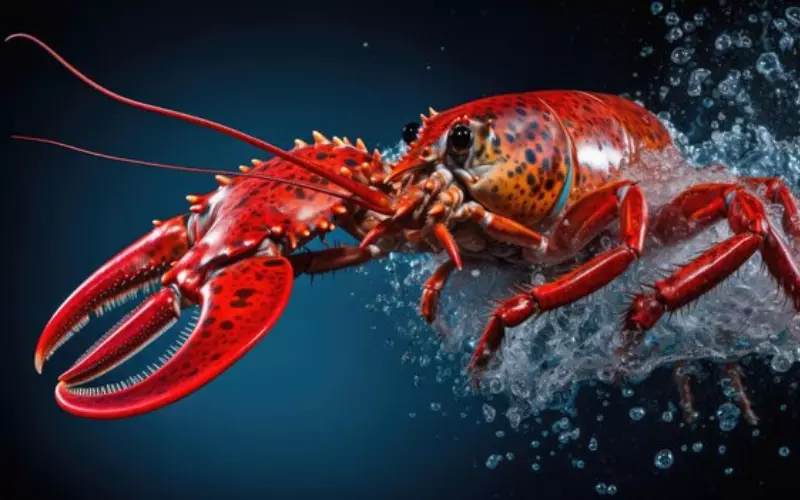
Lobsters have interesting social and sexual behaviours that help them communicate and reproduce. In their social behaviour, lobsters establish territories to defend against other lobsters. They use their claws to fight and show dominance. The bigger and stronger lobster usually wins. They also communicate by producing sounds, like a high-pitched noise called “scrapping,” to establish their territories and warn others to keep away.
When it comes to sexual behaviour, lobsters do something called “mating rituals.” The male lobster approaches the female, using his claws to hold and stroke her gently. If she is interested, she will allow him to mate with her. After mating, the female lobster carries the eggs on her abdomen for months until they are ready to hatch. She takes good care of the eggs, cleaning them and using her swimmerets to keep them well-oxygenated.
Lobsters have interesting social and sexual behaviours. They establish territories and communicate through sounds to protect their homes. When it’s time to mate, male lobsters approach females and perform gentle mating rituals. The female takes care of the eggs until they hatch. Learning about these behaviours and how they help lobsters survive and reproduce is fascinating.
Reproduction and Lifecycle of Lobster’s
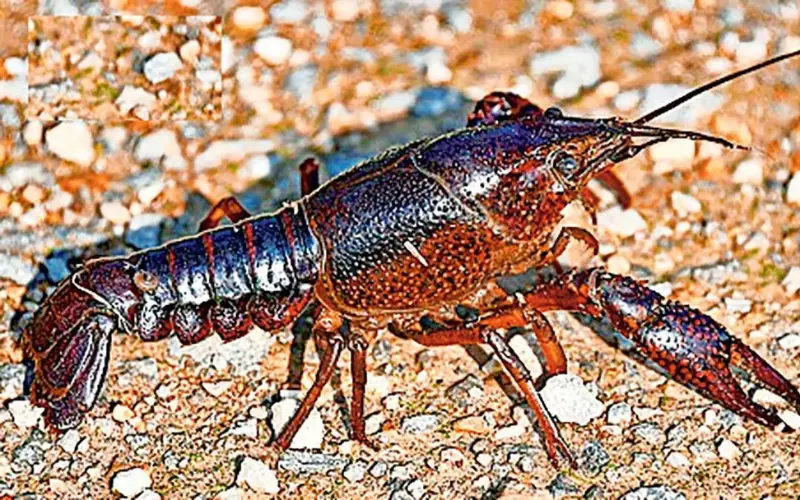
Lobsters are fascinating creatures with a unique life cycle. They start their journey as eggs, carried by the female lobster in a special pouch called the “berried” or “brood” until they hatch. The female can carry thousands of eggs at a time! Once the eggs hatch, tiny lobster larvae emerge and float in the ocean for several weeks. During this time, they moult, shedding their outer shell and growing a new one.
As the larvae grow, they go through several “instars.” In each instar, the lobster larvae develop more features and become more similar to adult lobsters. After several weeks of floating, the lobster larvae settle to the ocean floor and develop into juvenile lobsters called “postlarvae.” These postlarvae look like miniature lobsters but are still too small to survive independently. They seek shelter in rocky areas or bury themselves in the sand to protect themselves from predators.
As the juvenile lobsters grow, they undergo several moults, or shedding of their shells, until they reach maturity. This process can take several years, depending on food availability and water temperature. Once they reach adulthood, lobsters are ready to reproduce. The male lobster finds a female, and they mate by the male transferring a packet of sperm called “spermatophore” to the female. The female then stores the sperm until she fertilises her eggs.
Lobsters go through a remarkable life cycle. They start as eggs the female carries, hatch into larvae, float until they settle into the ocean floor as postlarvae, and then grow into juvenile lobsters. Through multiple moults, they eventually reach maturity and reproduce, completing the circle of life for these amazing creatures.
Threats to Lobster’s
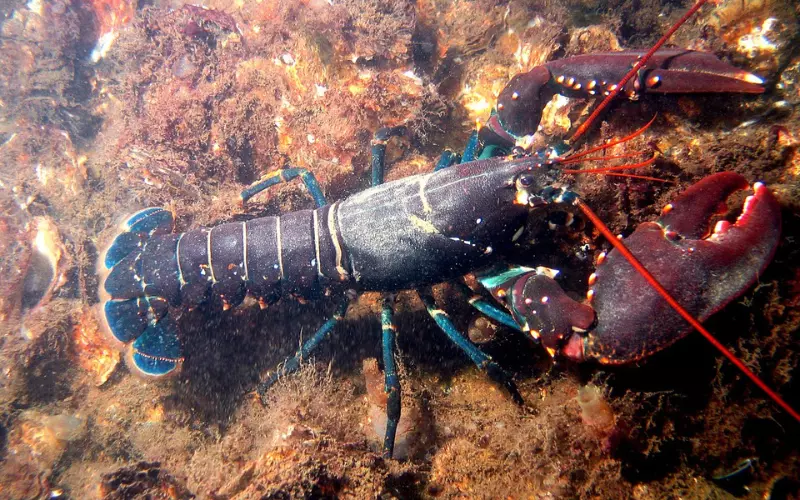
Lobsters, like many other animals, face threats in their natural habitat. One major threat to lobsters is overfishing. Many people enjoy eating lobsters, which has led to an increase in their demand. Unfortunately, this has resulted in excessive fishing, straining lobster populations. If we continue to catch lobsters at such a high rate, it can lead to their numbers declining significantly.
Another threat to lobsters is pollution. Pollution can come from many sources, such as chemicals and waste in the ocean. These pollutants can negatively affect lobsters by contaminating their habitat. When lobsters are exposed to polluted waters, it can harm their health and decrease their chances of survival. Therefore, we must reduce pollution and keep our oceans clean.
The third major threat to lobsters is habitat destruction. Lobsters live in different habitats, including rocky shores and coral reefs. However, human activities, such as coastal development and destructive fishing practices, can harm or destroy these habitats. When their homes are damaged or destroyed, lobsters lose their shelter and food sources, making it difficult for them to survive.
To protect lobsters, we need to take action. Regulating fishing practices and establishing protected areas where lobsters can thrive is essential. We should also be mindful of how our actions impact the environment and make efforts to reduce pollution. By working together, we can ensure that lobsters and other marine animals have a safe and healthy habitat to call home.
Conclusion
Overall, lobsters are fascinating creatures with a rich history and unique characteristics. These animals belong to the crustacean family and have been around for millions of years, evolving in incredible ways. They can be found in various parts of the world, particularly in the Atlantic and some parts of the Pacific oceans.
Lobsters are known for their striking appearance, with a hard exoskeleton and strong claws that allow them to defend themselves and capture their prey. Despite their tough exterior, these creatures are pretty vulnerable during their moulting process when they shed their old shells and grow new ones. They are also known for their ability to regenerate lost claws and limbs, which is truly remarkable.
Regarding their size and habitat, lobsters can grow to impressive lengths, with some species reaching over three feet long! They dwell in rocky or sandy areas on the ocean floor, seeking shelter in crevices and holes. Also, lobsters are nocturnal creatures, meaning they are most active at night and prefer to hide during the day.
Lobsters are captivating animals that have been around for millions of years. Their unique features, such as their hard shells and strong claws, help them survive in their ocean habitats. Despite their formidable appearance, lobsters moult and regenerate lost limbs, showcasing their incredible adaptability. These fascinating creatures continue to intrigue scientists and mesmerize people worldwide with their intriguing history, diverse habitats, and extraordinary abilities.
Frequently Asked Questions about Lobster (FAQ’s)
What is a lobster?
A lobster is a crustacean animal belonging to the family Nephropidae.
How big do lobsters generally grow?
Lobsters can vary in size but typically grow to be around 9 to 12 inches long.
Where are lobsters commonly found?
Lobsters are commonly found in the Atlantic Ocean, particularly along the eastern coast of North America.
How long do lobsters usually live?
Lobsters have a long lifespan and can live up to 70 years or more.
What do lobsters eat?
Lobsters are primarily carnivorous and feed on small marine animals, including fish, molluscs, and other crustaceans.
Do lobsters have any predators?
Lobsters have natural predators such as large fish, octopuses, and other lobsters.
Are lobsters considered a delicacy?
Lobsters are highly regarded as a premium seafood delicacy in many cuisines worldwide.
Can lobsters regenerate their claws?
Yes, lobsters can regenerate lost claws over time.
How do lobsters moult?
Lobsters shed their external shell through moulting to grow larger.
Do lobsters have good eyesight?
Lobsters have compound eyes that allow them to see movement and detect light.
Can lobsters swim?
Lobsters can swim by flexing their tail muscles but mostly use their walking legs to crawl on the ocean floor.
Are lobsters social animals?
Lobsters are generally solitary animals but come together in groups during the mating season.
Are lobsters Hermaphrodites?
Lobsters exhibit unique reproductive biology and are considered sequential hermaphrodites, starting as males and transitioning to females later in life.
How are lobsters caught or harvested?
Lobsters are typically caught using lobster traps or pots, which are baited to attract the lobsters.
Are all lobsters red in colour?
No, lobsters are not naturally red. They turn red when cooked due to a pigment change during the cooking process.
Can lobsters feel pain?
The capacity of lobsters to feel pain is still debated among scientists, but they have a sophisticated nervous system that allows them to respond to stimuli.

Hi there, I’m Emily Buono, and I’m thrilled to introduce myself! Currently, I’m part of two fantastic places: I work as a VisEx at the New England Aquarium and as an RAS at MGH CCM.
I completed my education at the Mass General Research Institute and Stonehill College, which is located in Valatie Colony, New York, in the United States.
Now, here’s the exciting part: I absolutely adore animals! They captivate me, and I’m always eager to learn more about them. In fact, I write articles all about these incredible creatures.
In the past, I’ve worn many hats, such as being a biologist at the Maria Mitchell Association, a cashier, a floor organizer, and a visitor experience and research animal specialist.
My passion lies in exploring the world of animals and helping others understand them better. So, if you ever have questions about animals, feel free to reach out. I’m here to make animal info easy and fun to grasp!












